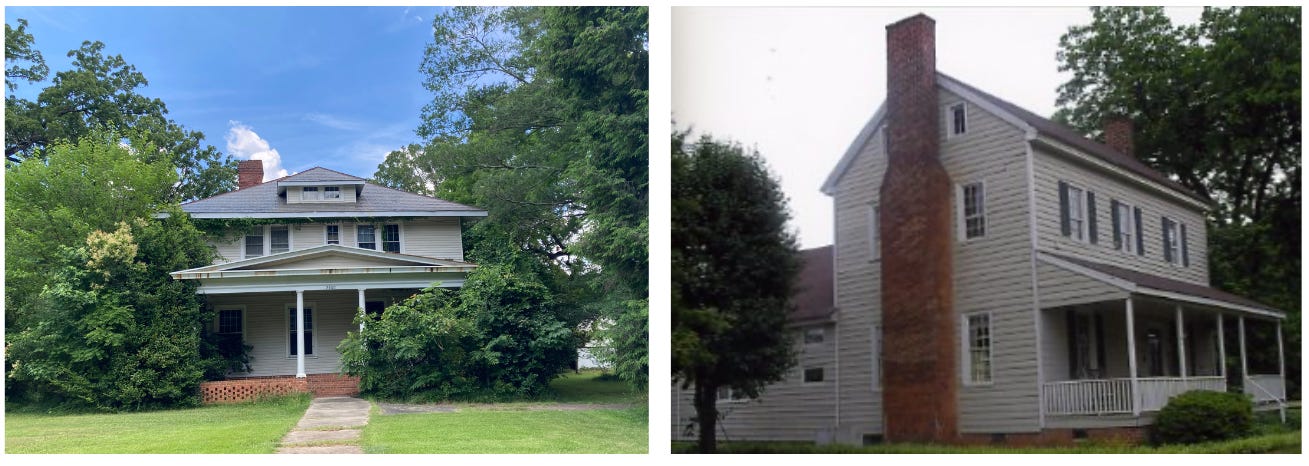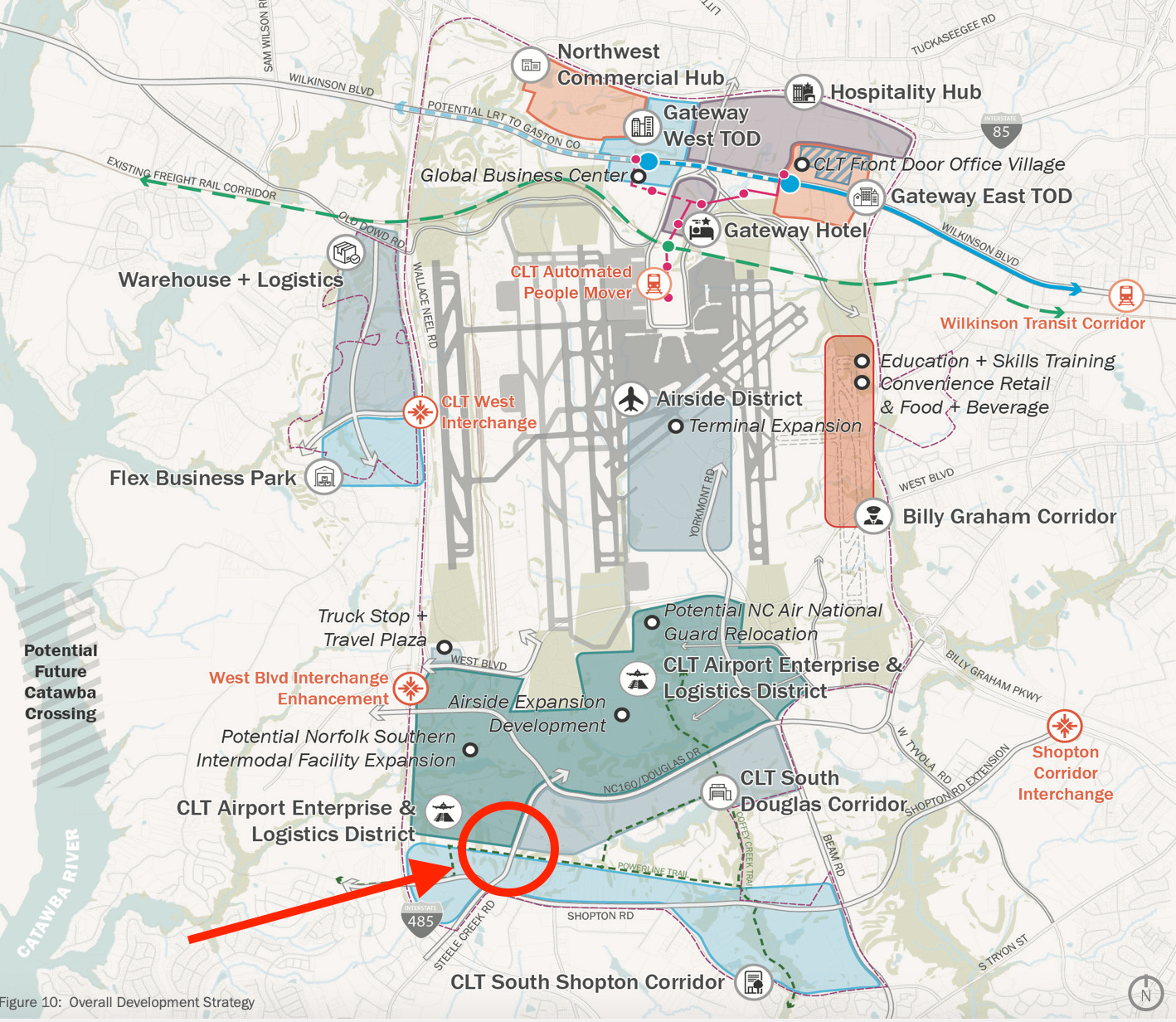Historic buildings near airport face demolition by city
'It seems like a double standard,' historic landmarks official says
The following article appeared in the Aug. 2, 2024, edition of The Charlotte Ledger, an e-newsletter with smart and original local news for Charlotte. We offer free and paid subscription plans. More info here.
The airport has been buying land south of its runways, with big development plans — but has bypassed the standard protections for historic buildings and is quietly seeking to knock one down as soon as this month
The Steele Creek Presbyterian Church Manse (left), built in 1914 to house church pastors, and the William Grier House (right), built around 1828 as a plantation house, are owned by the city. Airport officials are planning to demolish them, over the objections of members of the Charlotte-Mecklenburg Historic Landmarks Commission. (Ledger photo, left; Landmarks Commission documents, right)
by Tony Mecia
Charlotte is often known as a city that knocks down its history, with the blame landing at the feet of private developers.
But what happens when the developer who wants to demolish a historic building is the city itself?
That scenario seems to be playing out just south of Charlotte’s airport, where preservationists say that two historic structures, each more than a century old, could soon be torn down … by the city of Charlotte.
With one of the city-owned buildings — a Colonial Revival-style house built in 1914 for the pastor of one of Charlotte’s first churches — the city appears to have given itself special treatment by bypassing the typical procedures designed to help preserve historic landmarks.
“It seems like a double standard,” said Brian Clarke, chair of the Charlotte-Mecklenburg Historic Landmarks Commission, a city-county panel that works to preserve historic properties. He said the airport seems to have an “active disdain” for historic buildings it owns and appears to be “actively seeking out ways to destroy them.”
In a letter to City Council members on Thursday, Clarke said he and the landmarks commission’s staff were ordered by county officials to “cease preservation efforts related to Airport-adjacent, City-owned historic properties.” The commission, which has some powers under N.C. law, is an independent panel composed of volunteers appointed by the city and county governments. Its professional staff are county employees. It would be unusual for high-level county staff to try to exert pressure on an independent commission, or to order its historic preservation office to drop historic preservation efforts.
At issue is the future of an area south of Charlotte’s airport that contains several historically significant properties. For decades, as the airport has grown, it has been buying land, including houses, in neighborhoods along Steele Creek Road. Its long-range plan calls for manufacturing, warehousing and offices in the area in a district it calls “CLT South.”
Airport planners for years have envisioned the area south of runways as a center for logistics, manufacturing and office space. The red circle on this 2017 airport planning document (available online) contains many old structures that date from the 1800s and early 1900s that were connected to early settlers from the mid-1700s.
Over the years, the effects of those land purchases on neighborhoods have been routinely documented. But the effect of the airport’s expansion plans on nearby historic properties has received far less attention.
Early settlers, modern-day development pressures
Keep reading with a 7-day free trial
Subscribe to The Charlotte Ledger to keep reading this post and get 7 days of free access to the full post archives.




